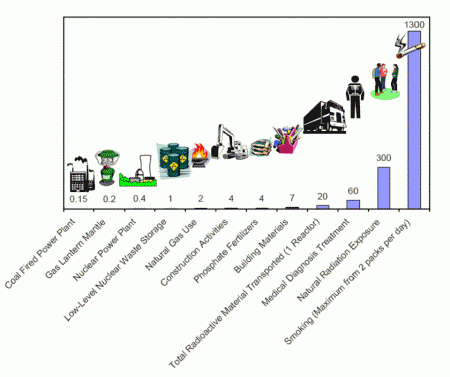We in the humanities are in love with the archive.
My readers already know that I am obsessed with archiving otherwise ephemeral social media. I’ve got multiple redundant systems for preserving my Twitter activity. I rely on the Firefox plugins Scrapbook and Zotero to capture any online document that poses even the slightest flight risk. I routinely backup emails that date back to 1996. Even my recent grumbles about the Modern Language Association’s new citation guidelines were born of an almost frantic need to preserve our digital cultural heritage.
I don’t think I am alone in this will to archive, what Jacques Derrida called archive fever. Derrida spoke about the “compulsive, repetitive, and nostalgic desire for the archive” way back in 1994, long before the question of digital impermanence became an issue for historians and librarians. And the issue is more pressing than ever.
Consider the case of a Hari Kunzru short story that Paul Benzon described in an MLA presentation last month. As Julie Meloni recently recounted, Kunzru had published “A Story Full of Fail” online. Then, deciding instead to find a print home for his piece, Kunzru removed the story from the web. Julie notes that there’s no Wayback Machine version of it, nor is the document in a Google cache. The story has disappeared from the digital world. It’s gone.
Yet I imagine some Kunzru fans are clamoring for the story, and might actually be upset that the rightful copyright holder (i.e. Kunzru) has removed it from their easy digital grasp. The web has trained us to want everything and to want it now. We have been conditioned to expect that if we can’t possess the legitimate object itself, we’ll be able to torrent it, download it, or stream it through any number of digital channels.
We are archivists, all of us.
But must everything be permanent?
Must we insist that every cultural object be subjected to the archive?
What about the fine art of disappearance? Whether for aesthetic reasons, marketing tactics, or sheer perversity, there’s a long history of producing cultural artifacts that consume themselves, fade into ruin, or simply disappear. It might be a limited issue LP, the short run of a Fiestaware color, or a collectible Cabbage Patch kid. And these are just examples from mass culture.
In the literary world perhaps the most well-known example is William Gibson’s Agrippa (A Book of the Dead), a 300-line poem published on a 3.5″ floppy in 1992 that was supposed to erase itself after one use. Of course, as Matthew Kirschenbaum has masterfully demonstrated, Gibson’s attempt at textual disintegration failed for a number of reasons. (Indeed, Matt’s research has convinced me that Kunzru’s story hasn’t entirely disappeared from the digital world either. It’s somewhere, on some backup tape or hard drive or series of screen shots, and it would take only a few clicks for it to escape back into everyday circulation).
I have written before about the fugitive as the dominant symbolic figure of the 21st century, precisely because fugitivity is nearly impossible anymore. The same is now true of texts. Fugitive texts, or rather, the fantasy of fugitive texts, will become a dominant trope in literature, film, art, and videogames, precisely because every text is archived permanently some place, and usually, in many places.
We already see fantasies of fugitive texts everywhere, both high and low: House of Leaves, The Raw Shark Texts, Cathy’s Book, The Da Vinci Code, and so on. But what we need are not just stories about fugitive texts. We need actual texts that are actual fugitives, fading away before our eyes, slipping away in the dark, texts we apprehend only in glimpses and glances. Texts that remind us what it means to disappear completely forever.
The fugitive text stands in defiant opposition to the archive. The fugitive text exists only as (forgive me as I invoke Derrida once more) a trace, a lingering presence that confirms the absence of a presence. I am reminded of the novelist Bill Gray’s lumbering manuscript in DeLillo’s Mao II. Perpetually under revision, an object sought after by his editor and readers alike, Gray’s unfinished novel is a fugitive text.
Mao II is an extended meditation on textual availability and figurative and literal disappearance, but it’s in DeLillo’s handwritten notes for the novel — found ironically enough in the Don DeLillo Papers archive at the University of Texas at Austin — that DeLillo most succinctly expresses what’s at stake:
Reclusive Writer: In the world of glut + bloat, the withheld work of art becomes the only meaningful object. (Spiral Notebook, Don DeLillo Papers, Box 38, Folder 1)
Bill Gray’s ultimate fate suggests that DeLillo himself questions Gray’s strategy of withdrawal and withholding. Yet, DeLillo nonetheless sees value in a work of art that challenges the always-available logic of the marketplace — and of that place where cultural objects go, if not to die, then at least to exist on a kind of extended cultural life support, the archive.
Years ago Bruce Sterling began the Dead Media Project, and I now propose a similar effort, the Fugitive Text Collective. Unlike the Dead Media Project, however, we don’t seek to capture fleeting texts before they disappear. This is not a project of preservation. There shall be no archives allowed. The collective are observers, nothing more, logging sightings of impermanent texts. We record the metadata but not the data. We celebrate the trace, and bid farewell to texts that by accident or design fade, decay, or simply cease to be.
Let the archive be loved. But fugitive texts will become legend.




